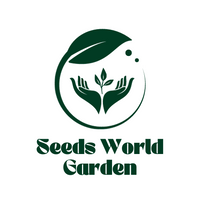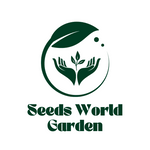Quantity: 100+ Seeds
Color: As picture
Free Shipping and Buy 2 Get 1 Free
1. Squash is a popular vegetable that is grown and harvested in many parts of the world. It is a member of the Cucurbitaceae family and is closely related to melons and cucumbers. Squash is easily recognizable by its characteristic shape and color. It has a hard, thick outer shell which can vary in color from yellow or green to orange or even dark green. Inside, the squash is filled with edible, soft, fleshy seeds.
2. Squash is a nutritious vegetable that is high in vitamins and minerals. It is a great source of dietary fiber, vitamin A, C, and B-complex vitamins, as well as magnesium, iron, and calcium. Squash is also low in calories and fat, making it a great addition to any healthy diet.
3. Squash can be cooked in a variety of ways - boiled, steamed, roasted, or baked. It can also be eaten raw, either as a snack or as part of a salad. Squash also makes a great addition to soups and stews.
4. Squash seeds are also edible and are a great snack food. They are rich in protein, fiber, and healthy fats, making them a nutritious and satisfying snack. Squash seeds can be eaten raw, roasted, or ground into a powder to be used as a seasoning or added to smoothies and other recipes.
5. Squash is an easy vegetable to grow and is a great addition to any garden. It requires a sunny spot in the garden and soil that is well-drained and rich in nutrients. Squash will begin to produce fruits within a few weeks and will continue to produce throughout the growing season.
How to Grow Your :
1. Soak in water for 24 to 48 hours before you t them. This allows moisture to penetrate the coat and leads to swelling of the ’s parts to spur germination.
2. Find a location with well-drained, organic-rich, sandy or silt loam and with a minimum average temperature of about 60 degrees Fahrenheit during the t’s early growth. The most favorable temperature range is between 75 to 80 degrees. The t should ideally receive six hours of sun per.
3. Till the soil to rid it of weeds and to increase air circulation. Apply compost to the soil after tilling.
4. Place two or three in a hole about ½ to 1 inch deep in the soil along a fence or under a 6-foot-tall trellis form. The holes should be 15 to 23 inches apart and rows 3 to 5 feet apart.You can also start in small plastic pots in a commercial soil mix.
Shipping:
All orders Free Shipping and Buy 2 Get 1 Free. Normally North American delivery time will take 7-14 days (shipping delays due to large orders will add 1-3 weeks depending on time). Other areas please wait 14-28 days for the order to arrive.
RETURN POLICY
We have a 30-day return policy, which means you have 30 days after receiving your item to request a return.


